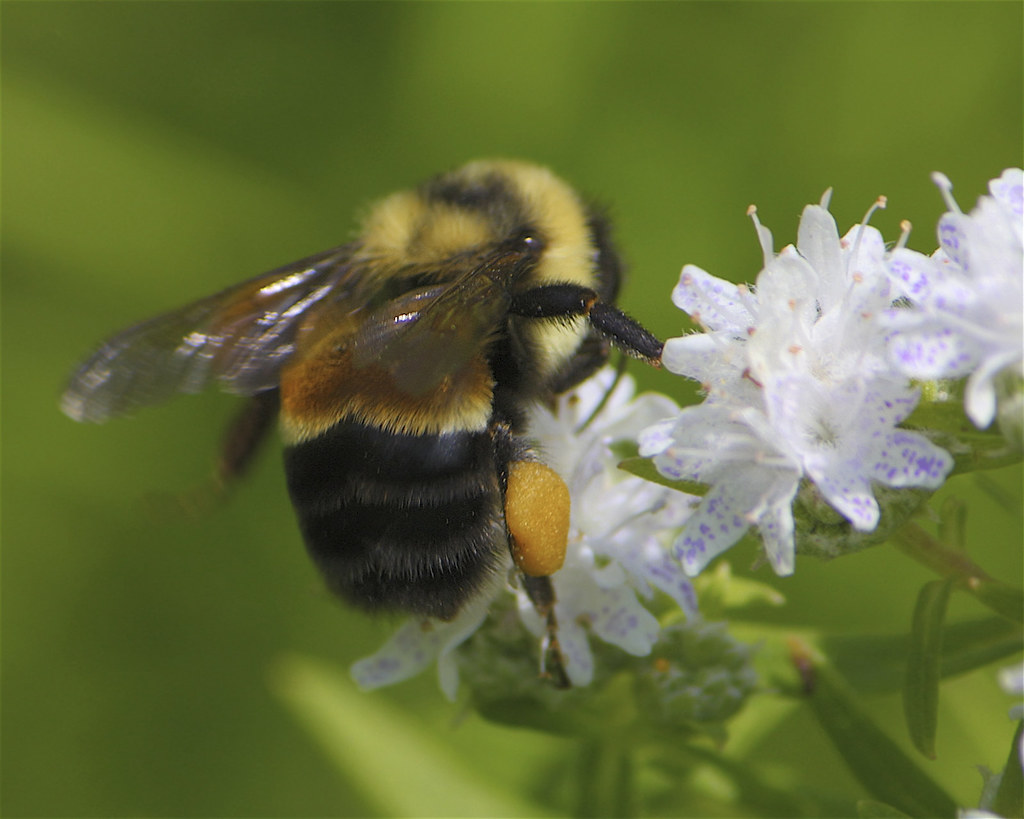Seven types of bees once commonly found in Hawaii are now facing extinction. They became the first bees to be added to the federal list of endangered and threatened species, according to U.S. wildlife managers. The listing decision classifies seven varieties of yellow-faced or masked bees as endangered.
Recent surveys found their populations have plunged in the same fashion as other types of wild bees – and some commercial ones – elsewhere in the United States.
Closer to New Jersey, the U.S. Fish and Wildlife Service recently proposed listing the rusty patched bumble bee for federal protection as an endangered species.
This pollinator was once widely found in the upper Midwest and Northeastern United States, but has been in decline the past two decades. This would be the first bee in the continental United States formally proposed for listing under the U.S. Endangered Species Act.
Not surprisingly, the decline is due to disease, pesticides, climate change and habitat loss.
 |
| rusty patched bumble bee by Dan Mullen on Flickr |
So named for a reddish "rusty" blotch on its abdomen, the Bombus affinis has declined both in numbers and distribution by more than 90 percent since the late 1990s, according to the Fish and Wildlife Service. The rusty patched species is one of 47 varieties of native bumble bees in the United States and Canada.
A separate report from beekeepers in South Carolina was that they found millions of bees dead in their hives that were victims of acute pesticide poisoning from Naled, meant for controlling mosquitoes.
This past year our nation's beekeepers reported losses of 44% of their bees. Some research shows the cause as the rise of another class of pesticide called neonics.
Population numbers for wild bees are much more difficult to document than those in honey bees, as managed commercial beekeepers carefully track their hives.
Bumble bees are distinguished from domesticated honey bees, but they are essential pollinators of wildflowers and about a third of U.S. crops. Their annual economic value to farms is estimated at $3.5 billion.
Endangered Species Act status would help safeguard the bumble bee and is really the only way that there would be any legal strength in requiring further action.

1 comment:
Many people started to raise bees to ensure they would not be endangered. When this has an impact on commercial beekeepers, there could be a notable impact on pollination.
Post a Comment